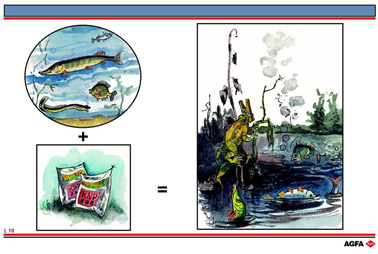L18 Eutrophication
Aim: To show that an increased use of fertilisers, especially phosphates eventually turn still water into a dead pool. |
Until a few years ago pentasodium phosphate (Na5P3O10) was widely used in washing powders as a water softener. This compound hydrolyses slowly in water with the release of phosphate ions.
These phosphate ions were present in the dirty water from the washing and therefore ended up in our rivers and lakes. Scraps of food and fertilisers also release phosphate ions which eventually end up in the surface water.
However, if phosphates are present in too large concentrations the algae and plants on the surface of slow moving rivers and lakes grow prolifically. These then block out the sunlight and the fish, plants and plankton that live further down in the water receive insufficient light and die .This dead organic material is decomposed via an aerobic process which uses up the dissolved oxygen in the water. When insufficient oxygen is present for aerobic decomposition, the decomposition continues anaerobically. Very quickly the lake or stream changes into a stagnant pool in which little life is possible (eutrophic)
This is the reason why, in most modern detergents, the phosphates have been replaced by zeolites (see illustrations 14 and 15). The zeolites are not without their own drawbacks, as they produce large quantities of silt.
